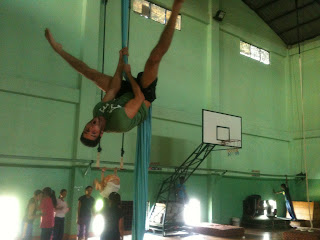"But
this guy only talks about martial arts, what the hell is he doing in Nepal
apart from dressing up as a karateka and running with monkeys? "
As Rouen
Business School would put it, I am exploring new worlds and going forward as a
responsible leader.
I am working
for Freedom Matters, a British organisation
that fights child trafficking and aims to:
-
free
children and young people who have been enslaved or subjected to sexual abuse
-
bring
them justice by actively pursuing the traffickers,
-
restore
their confidence by teaching them new skills – centred on visual arts and
performing arts – which lead to employment.
 |
| Drawing class at Godawari refuge. |
The Sapana
and Circus Kathmandu projects aim to make contemporary circus a respected
profession in Nepal.
Sapana
allows young people in the refuge to discover circus professions before joining
the professional company, Circus Kathmandu, which is able to self-finance and generate
funds by performing both locally and internationally.
 |
| Circus Kathmandu, currently made up of thirteen talented young people. |
I am the
Marketing Director and Events Producer. As
such, my main responsibilities are to create Circus Kathmandu’s visual
identity, promote it in Nepal and abroad and organize and produce its shows.
The website.
During a
typical week, I also train with the troupe twice or thrice, visit the children at
the Godawari refuge on Saturdays and give Anjeli - a CK member studying
business - marketing and production lessons on Sundays.
 |
| First attempt: juggle with three clubs, handstand and backflip. |
So, I have
finally managed to connect the dots: an arrogant business school I never saw
the point in, a "cultural organisation marketing" major from Bordeaux
which I can only describe as my worst student experience and a strong urge to
travel and get involved in social issues.




